We all know the phrase `no hoof no horse`. This is a phrase of the mid-18th century. This is still the case for horses today. But since about 50 years ago we started to change the way we feed our horses. Because of this, more and more horses nowadays have metabolic disorders due to a disturbed hindgut. So I would like to add a new phrase `no gut no horse`.
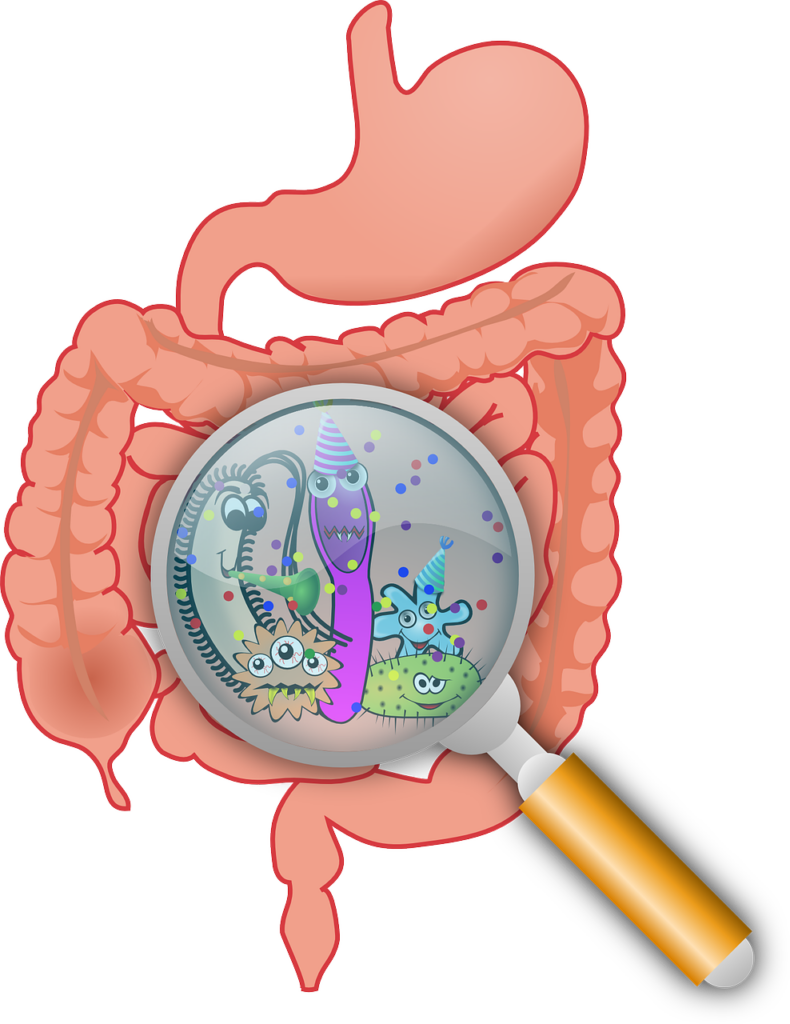
Where it all begins
So how does an unhealthy or disturbed hindgut arise?
It all starts with the way we are breeding and feeding our horses.
Let’s say you have a mare and you would like to breed with her. There are many reasons why people decide to breed with a mare. One of the most common ones is the mare is retired due to injury. I often hear: She used to compete at high levels but we just couldn’t keep her sound. So we retired her (usually at a young age) and decided to breed with her. Which is fine right?
The question is: why does this mare keep getting unsound? We need to look at her past and medical history. What is her diet like? What medication has she been on? (due to injuries), but we also need to look at genetics and epigenetic factors.
In most cases, the horse diet has been poor or it is not meeting their needs, and this causes weaknesses throughout the system. The wrong nutrients will disturb the gut and metabolism of the horse. This will result in certain health issues.
If this mare already has a disturbed hindgut, which you can expect when she has been retired due to injury, and you want to breed with her, then you can almost be certain that she will not breed a healthy foal. The foal can inherit metabolic imbalance`s from the dam or genetics that have special requirements, such as inheriting a sensitivity to tendon issues. But…. they can also have a bad start in life due to the mare not having a healthy gut because of the wrong nutrition.
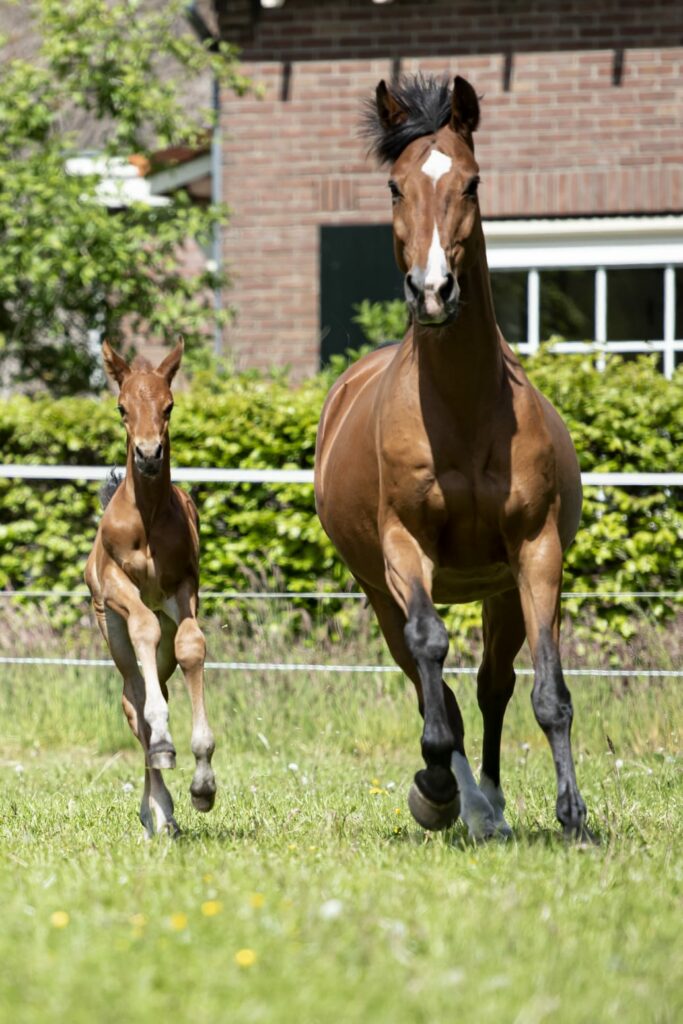
When a foal is born, their hindgut is `sterile`. Foals are not born with microbes in their gut. These microbes need to be formed. They will start getting them by feeding from their mother, but you will also see them eating faeces from their mother and also from other horses if they are out in the paddock with them. 50% of poo is undigested plant fibre and the rest is microbes.
So the first microbes that enter the foal’s hindgut will be stored in the epithelia cells and the body’s immune system will recognise this as its own. This system is blind because it does not know what is good or isn’t good because it has no experience yet. If you have bad microbes entering the hindgut then they will be stored in the cells forever. So you can imagine if the foal’s mother already has the wrong microbes growing in her gut then this will be passed on to the foal.
It takes the foal 4-5 months to develop an immune system that comes from the mare. So if for example you have a mare and you feed a simple thing like haylage, which contains lactic acid bacteria, then this will affect the microbes in the hindgut due to acidity, and these lactic acid bacteria do not belong there!
Another challenge at the start of life is that foals are very playful and they can harm themselves and get wounds. In some cases, the vet will have to come out and give the foal antibiotics. This is another problem because antibiotics kill both the bad and the good microbes. So any good microbe that was growing has now been killed. If you disturb this whole gut microbiome process at the start of life, then you will have a foal with digestive issues for the rest of its life.
What happens when the gut microbiome is disturbed
It is important to know that you can’t Re-establish the microbiome. The wrong microbes will always grow back, even if you kill them. They are established in the gut wall. You can kill what is in the lumen but what is established in the wall will always come back. The immune system will recognise the first microbes that enter the gut and consider these as the good ones even though they are bad.
The horse’s digestive system is made to digest cellulose/plant fibre. Microbes that digest cellulose will need a pH of 6,8-7,2. A horse that has a disturbed microbiome will have a lower pH, and the wrong microbes like to live in an acid environment. This is why it is important that you feed the foal and the dam hay and not haylage! Why? Because haylage, which contains lactic acid bacteria, will drop the pH below 6-5 and will kill the microbes that digest the cellulose. This is another cause of health issues.
When the horse has the wrong microbes growing and its pH is low, then all sorts of health issues can arise. A low pH means the horse is not in homeostasis. When there is no homeostasis then the body can`t take up the nutrition properly. Neither can the gut create its own amino acids and certain vitamins. Also, the good microbes that get killed are seen as waste/toxins and the liver and kidneys will need to work hard to get rid of these. So you are burdening these organs as well.
Health problems that can arise:
What to do when you have a horse with a disturbed microbiome
As mentioned before, you can`t re-establish the microbiome. In most cases, you will have a patient for the rest of the horse`s life. There is no quick fix and no cure. BUT…. you can help and support the horse by making some changes to its diet and environment.
If you feed haylage, switch to hay. This is the most important step.
Do not feed concentrates with high sugar or starch content.
And be careful with adding pre and probiotics to the diet. When feeding pre-biotics, you might be feeding the wrong microbes. And probiotics are sleeping bacteria and when they end up in the stomach the acid will kill most of them. The dead microbes then end up in the gut and need to be excreted, so you’re burdening the liver and kidneys again and the dead microbes also make the gut acidic. Also, most probiotic products that are sold contain lactic acid bacteria, these don’t grow in large amounts in a horse`s gut and again it makes the gut acidic.
You need to get the pH right again and bring the horse back to homeostasis. For this we recommend you contact a professional therapist rather than experimenting yourself. There is no such thing as a `cookbook` that will tell you what recipe to use to get your horse back to health again. For example, you can have 5 horses with laminitis, but they will all need their own therapy plan to get back to health again.
Through correct management, you can get the horse back to health again and you can get the symptoms under control. But you will have a patient for the rest of it’s life.
At The Horse Therapist, we have a holistic but also orthomolecular and epigenetic approach.
We don’t sell any standard herb mixes, we help to provide the body cells with optimal molecular medicine, and we look at how the environment can affect the way the horse’s genes work. Most importantly, we do not suppress any symptoms and we treat the underlying issue.
We work with a team of professionals to get your horse back to health again.
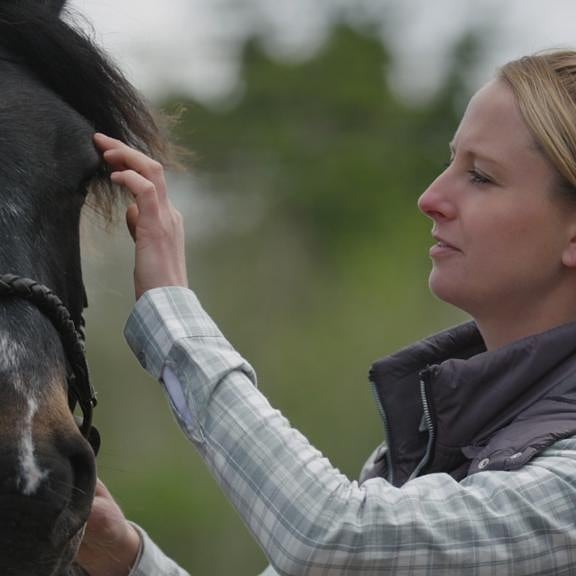

Share
Your subscription is 100% Free for our first year, No credit card details required.

Charlotte Dujardin, a name synonymous with elegance and excellence in the equestrian world, now finds herself at the heart of
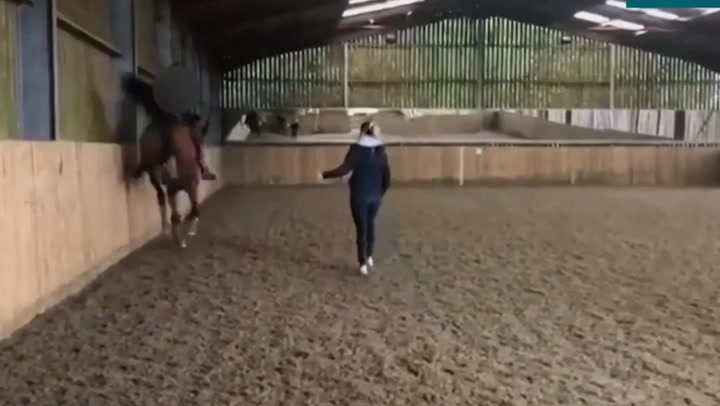
The world is currently rocked from the recent release of a video exhibiting clear animal abuse.. and I’m not going
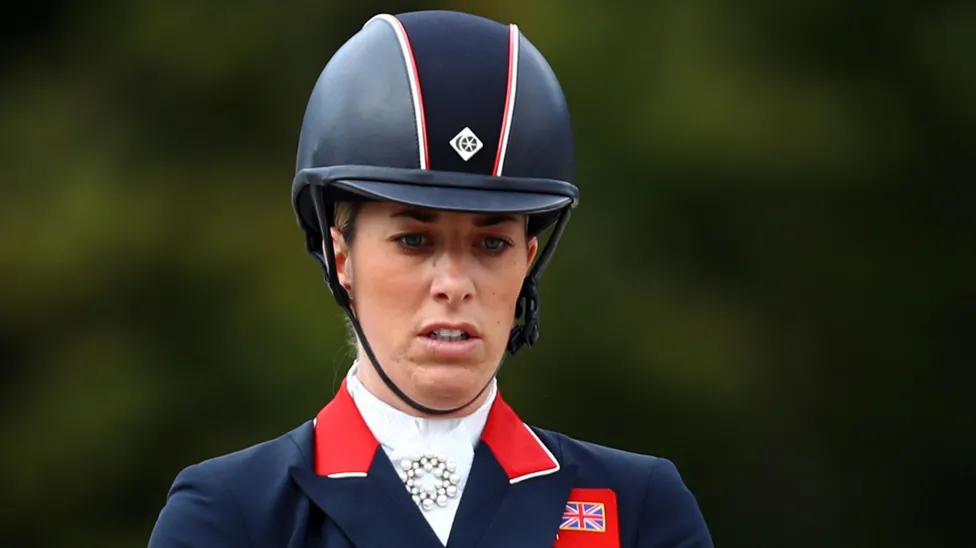
The equestrian community is currently facing a critical moment following the recent revelations about Charlotte Dujardin. The video that surfaced